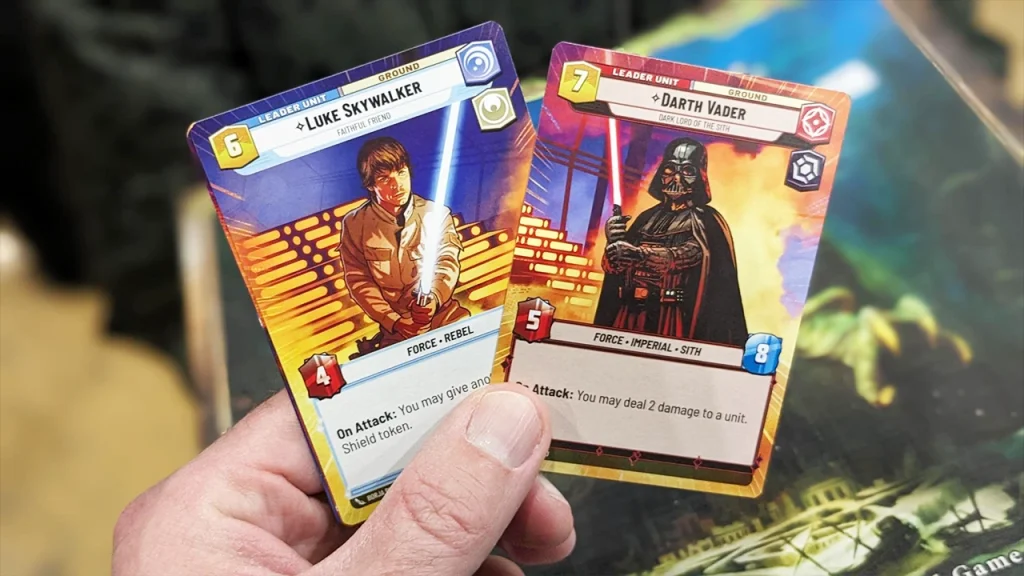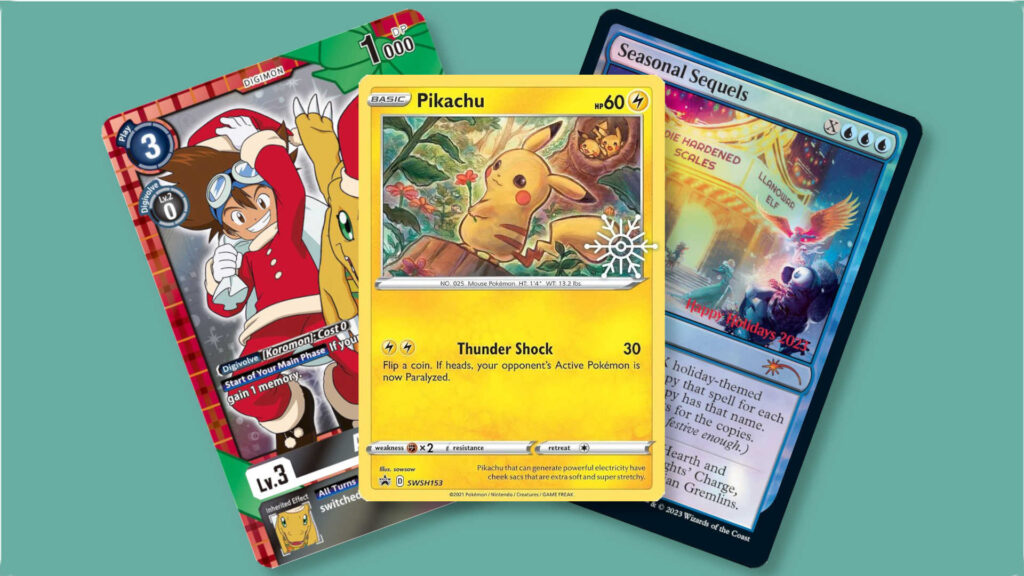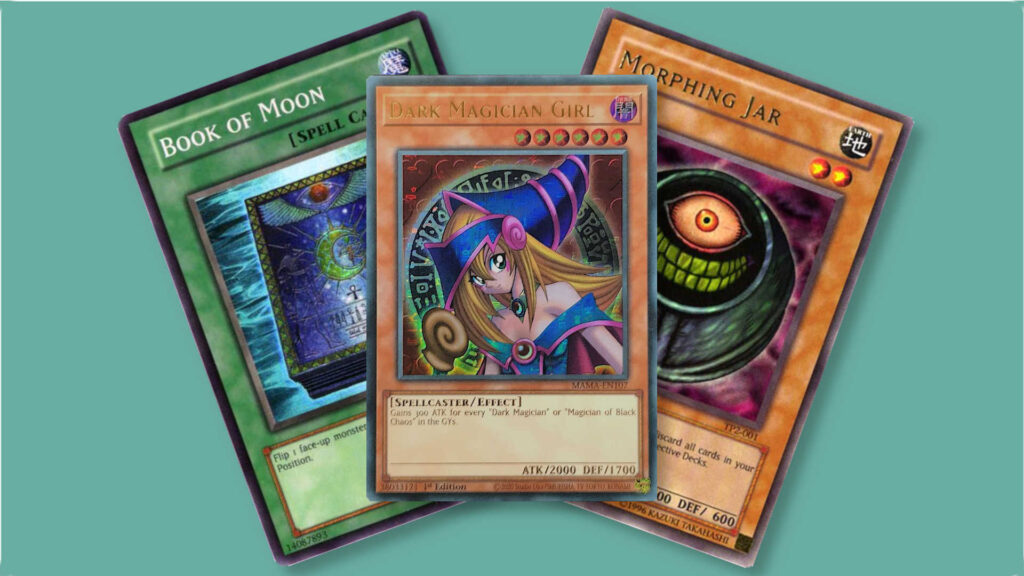Thanks to our friends at Entoyment Wargaming and Hobby Centre, Card Gamer were invited to check out the Beachhead 2024 tabletop gaming show.
Asmodee were present at the show, with numerous games being demonstrated to visitors; one in particular was of great interest to us eager CCG fans at Card Gamer: Star Wars Unlimited.
We were able to learn and play Star Wars Unlimited, so what did we find out and what are our early thoughts on the game?
Let’s take a look!
Table of Contents
ToggleHow Do You Begin Playing Star Wars Unlimited?
In Star Wars Unlimited, players take on the role of the Rebel Alliance or the Empire, with the ultimate aim of the game being to destroy their opponent’s Base card.
Players each start with a hand of 6 cards drawn from their deck, as well as the aforementioned Base and their chosen Leader card (on its horizontal side), with both types of cards in the centre of the play area.
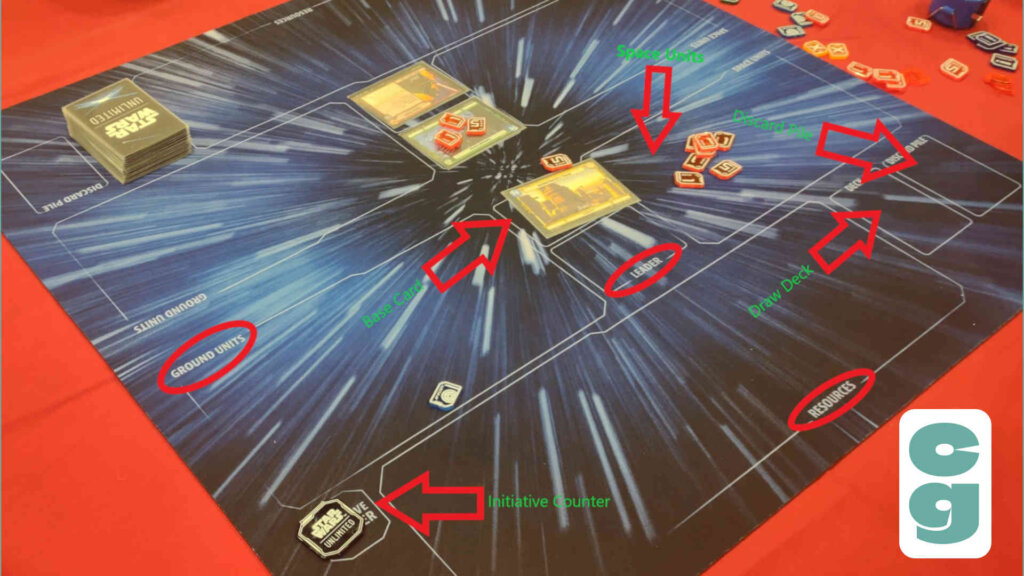
We’ve marked all of the different areas in the image above!
Leaders are double sided; their vertical side transforms them into a unit that can be deployed onto the battlefield, but this can only be used once players have enough resources in play for this.
It’s also worth noting that this is a once-per-game action and their Leader can be destroyed in battle; we have more details on how this works below!
At the outset of the game, players choose two cards from their hand of six to place face down in their resource area; these will no longer be available for use during the game except to pay for other cards to come into play.
This works very similarly to the way that Ink works in Disney Lorcana, though unlike in Lorcana, any card from your hand can be used as a resource.
One player is randomly chosen to start the game and is given the initiative counter; then the game is ready to start.
The Action Phase In Star Wars Unlimited
Starting with the player who has the initiative counter, they may carry out one action before play passes over to the other player.
They can choose one of the following actions during the Action Phase:
- Play a card from their hand
- Use a card’s ‘Action’ ability
- Attack with a unit
- Take the initiative
- Or finally, pass.
Playing A Card From Your Hand
There are a few different types of cards, but in order to play any card from your hand in Star Wars Unlimited, its resource cost must be paid.
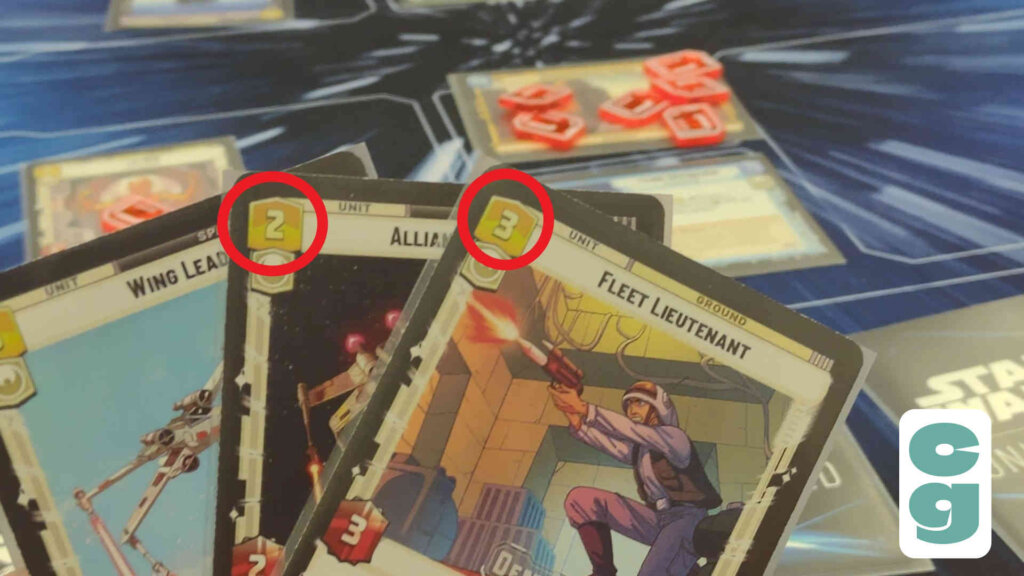
The resource cost can be found in the top left corner of the card, as highlighted in the example above.
Paying the resource cost means exhausting the correct number of resources; to exhaust a card, it is turned on its side and will no longer be available for use this turn.
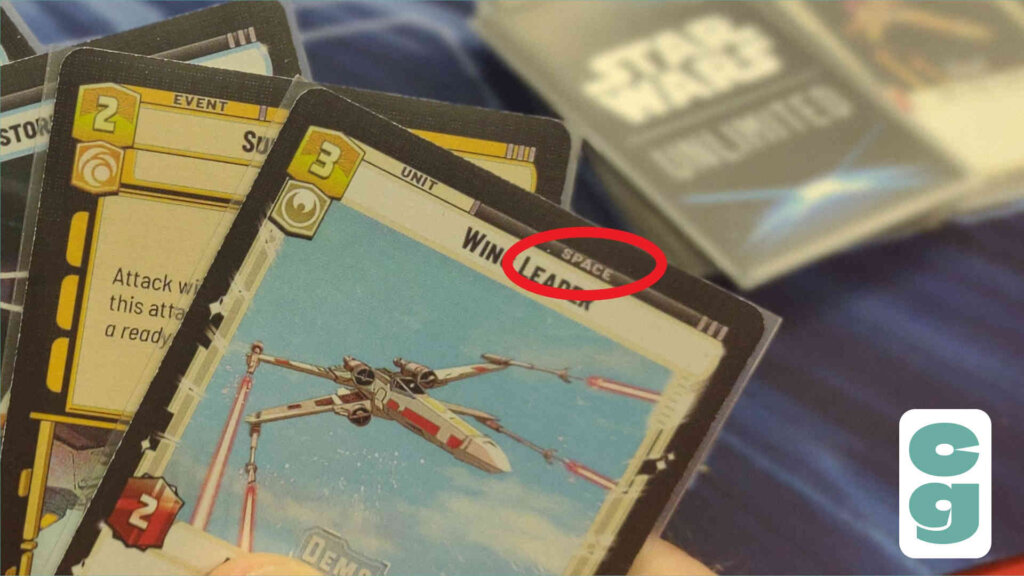
If it’s a unit card, it’s then played into either the player’s Ground Area or their Space Area; this is also specified on the card you’re about to play, which we’ve highlighted above.
Cards come into play exhausted, so cannot be immediately used.
However, if you’re playing an Event card, it’s paid for using resources as normal, its effect – as noted on the card text – is carried out and it is then immediately discarded.
If you’re playing an Upgrade card, it will also need to be paid for using resources, then it is ‘attached’ to a unit by being placed underneath it, keeping the bottom of the card visible.
The reason for that is that it boosts the attack and defence stats of the unit it’s attached to; the bottom of the card shows these stat bonuses.
Note that some cards have a ‘When Played’ ability, which can be used as soon as the card is played.
Using A Card’s Action Ability
Some cards have an ‘Action’ ability, which can be used during a player’s turn.
These may require the card to be exhausted and/or for a resource card to be paid before being carried out.
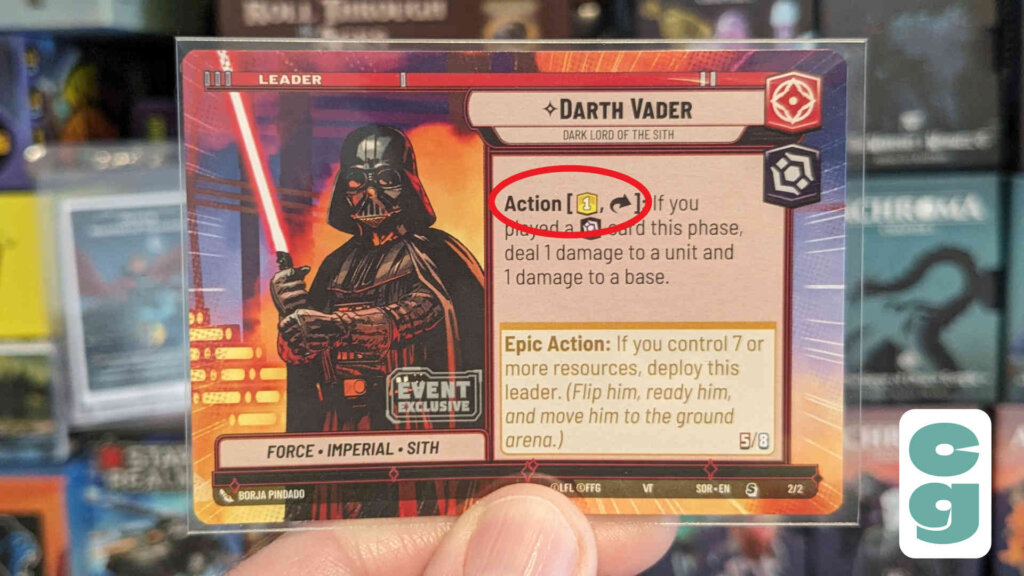
As you can see from the example above, this Leader card needs to be exhausted and a resource cost of 1 must be paid in order for this Action to be used.
The example above also demonstrates that Leaders have actions, which can be carried out in the same way as those on other unit cards.
Leader cards also have Epic Actions; as mentioned and shown in the image above, these are detailed on each Leader card and can only be used once per game.
Attack With A Unit
A unit may attack as an Action during the Action phase.
When attacking, players choose one of their ready (non-exhausted) units to attack, then choose a target.
They may choose an opponent’s unit only if it is in the same area as the attacking unit; that is to say, either the Ground Area or Space Area. A Ground Area unit may not attack an opposing unit if it is in the Space Area, or vice versa.
They may also choose to attack the opponent’s base; reducing its HP to zero will secure victory, so it’s generally a good idea to chip away at their base if you can!
Damage is not dealt by bases, so if that is the attacking player’s target, it takes HP damage equal to the Power (the red number) of the unit’s card, to its HP (the blue number).
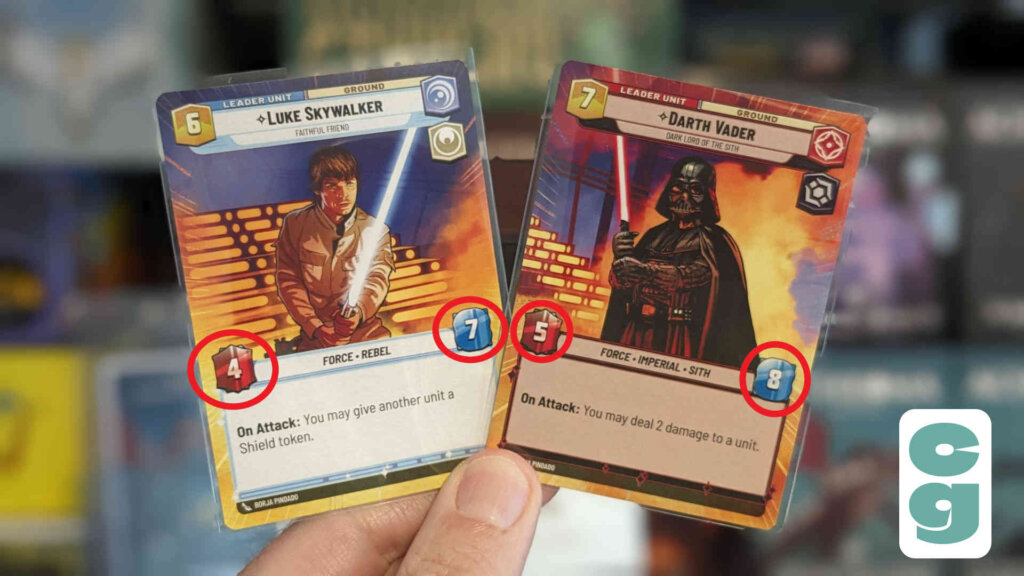
Both Power and HP are highlighted in the example above, for each card.
If attacking an opponent’s unit, each unit takes the damage simultaneously. So each unit can be destroyed in one combat encounter, or one, or neither.
Both must take the appropriate HP damage, which remains on each card unless it’s destroyed in the attack; in which case, the destroyed card goes to its owner’s discard pile.
In the example above, regardless of whether Luke Skywalker is attacking Darth Vader or vice versa, Luke will take 5 HP of damage and Darth Vader will take 4 HP of damage from Luke.
Each will survive, as Luke has 7 HP and Vader has 8; however, neither will survive a second combat round with each other!
Take The Initiative
This is just a case of taking control of the initiative counter so that, in the next round, you get to act first.
Note that taking the initiative also counts as passing, so it immediately stops you from taking further actions during a round.
That means it’s not something you will want to do until you’ve done everything else you need to on your turn!
Pass
A player must pass if they cannot or do not want to take further actions, or if the other player has already taken the initiative (the take the initiative action is only available to one player per round).
Once both players have either passed or taken the initiative, it’s time for the Regroup Phase.
The Regroup Phase In Star Wars Unlimited
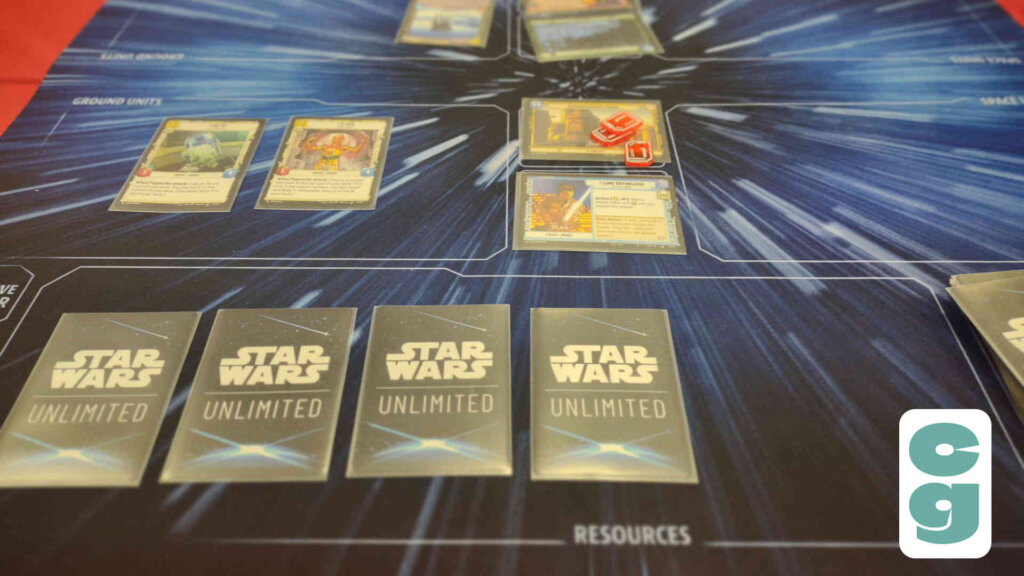
Once both players have finished their turns, they take the three steps that comprise the Regroup Phase, in order.
These are:
- Draw cards: players must each draw two cards
- Resource a card: each player may choose to place one of the cards in their hand face down in their Resource Area, thus increasing the number of resources available to them on future turns
- Ready all exhausted cards: each player then readies all of the exhausted cards in each of their play areas.
Once this is done, play passes to the player who has the initiative counter and the Action Phase begins again.
Winning A Game Of Star Wars Unlimited
To win a game of Star Wars Unlimited, you must reduce your opponent’s base card to zero HP.
What Is Star Wars Unlimited Like To Play?
As you can likely tell from the basic outline of the rules above, Star Wars Unlimited is fast paced and very easy to learn.
It only took a few turns for the rules to truly sink in.
Drawing two cards per turn, then playing resources from your hand ensures that there’s never an issue with drawing resources or having too many in your hand, in lieu of units; a problem which can affect games such as Magic: The Gathering, which uses a specific type of card (Land) to use as its energy source (Mana).
Taking just one action per turn before passing over to your opponent initially felt quite alien, when in any other CCG you can take as many actions as you want before your opponent takes their turn (as long as you can pay for them!).
However, this ensures an incredibly fast paced game once you settle into its unique rhythm; it stops players from enacting elaborate plans and combos, which will often leave their opponent just watching them play card after card or decimate their units, one after another.
It’s a neat and somewhat unique choice that keeps the game moving and even makes it pretty dynamic, as you’re able to adapt and respond to your opponent’s every action as you see fit.

Though, having only played a demo game, there was no opportunity to see how deck building works or to improve upon the cards we were given, the decks did seem very well balanced against each other and were very intuitive to use.
Great For Trainee Jedis
The card design is clean and easy to read, with appealing comic book-style artwork that eschews realism and overly flashy aesthetics for accessibility.
It’s worth noting that, on the same point of accessibility, each card’s abilities were also straightforward to understand, once the basic rules had been absorbed.
Which is another point in its favour; Star Wars Unlimited is a really easy game to grasp.
Keeping the game straightforward to learn and also keeping the product range simple, given that the game will launch with just the Starter set and one type of Booster pack, is a great way to draw in Star Wars fans and curious players of just about any skill level.
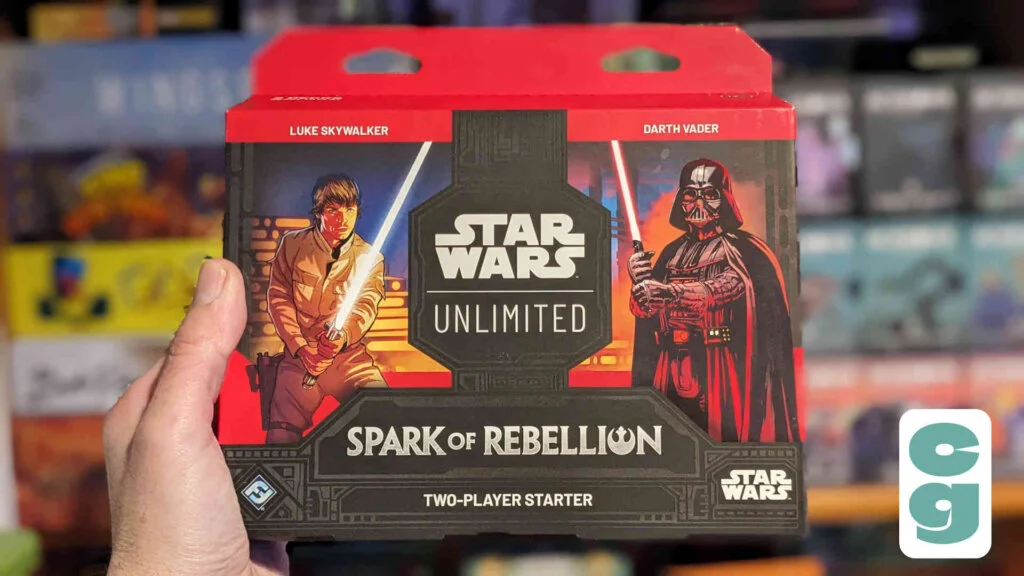
The decks used in the demo of the game were from the Star Wars Unlimited: Spark of Rebellion 2 Player Starter set; it’s something that I’ll definitely be picking up upon release, when the game launches on March 8th, 2024.
In advance of release, many local game stores will be running pre-release events; you can check out your closest event using the official Store Locator via the Star Wars Unlimited website.
You can check out our list of products that’ll be available in our Star Wars Unlimited: Spark of Rebellion release guide.


